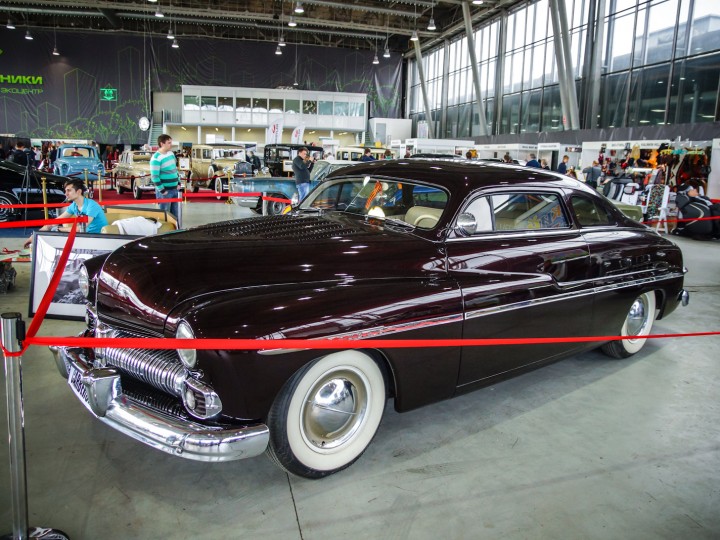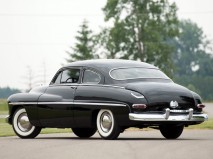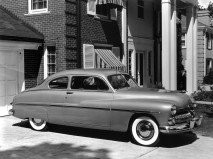1950 Mercury Eight Custom Coupe
Within its era and beyond, the Mercury Eight was popular with customizers. In 1949, Sam Barris built the first lead sled from a 1949 Mercury Eight; the Eight became the definitive lead sled, much as the Ford V-8 (as the "deuce") was becoming the definitive hot rod. The Eights were among the first models to receive an aftermarket OHV engine swap, since Oldsmobile and Cadillac developed the first high-compression OHV V8 engines in 1949, whereas Ford was still using a sidevalve engine. Sam and George Barris also used the 1949 body style to build "the most famous custom car ever", the Hirohata Merc, for customer Bob Hirohata in 1953. Setting a style and an attitude, it had a "momentous effect" on custom car builders, appeared in several magazines at the time, and reappeared numerous times since, earning an honorable mention on Rod & Custom 's "Twenty Best of All Time" list in 1991. The Eight remains a very popular subject for car modellers.
Fiberglass replicas of the Eight, inspired by Sam Barris's car, are still in production and are popular with custom and rod enthusiasts. In 1950, a high-end two-door Monterey coupe was introduced in the same vein as the Ford Crestliner, the Lincoln Lido coupe and theLincoln Cosmopolitan Capri coupe in order to compete with the hardtop coupes General Motors had introduced the previous model year. The front suspension was independent with stabilizer bars. In 1952 the Monterey would become its own series.











